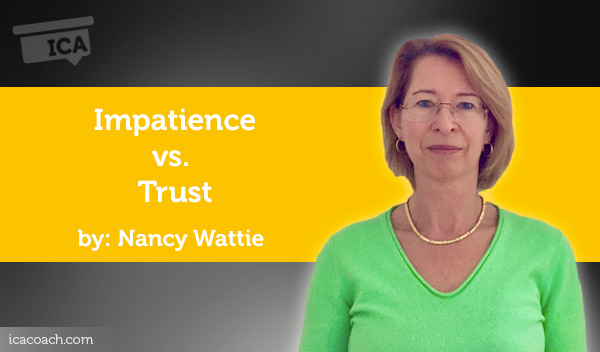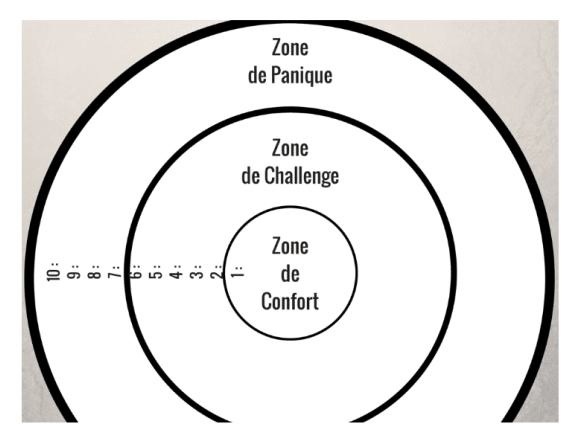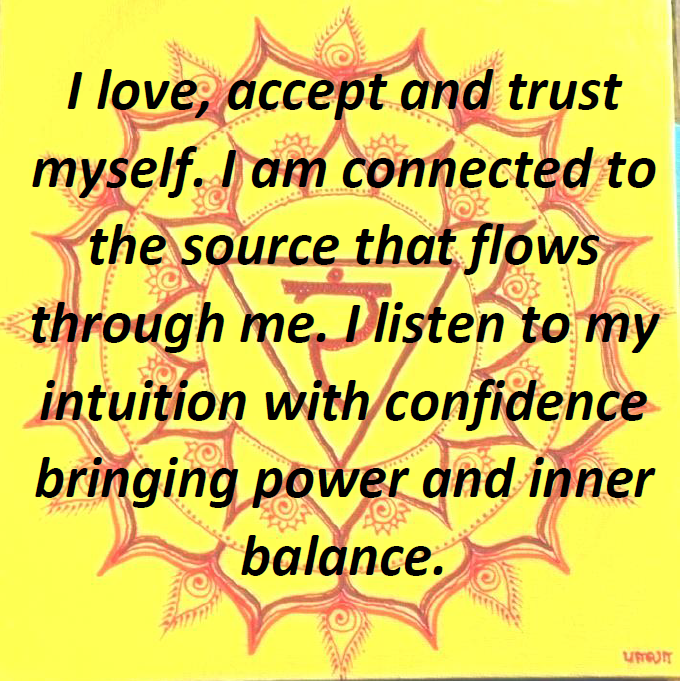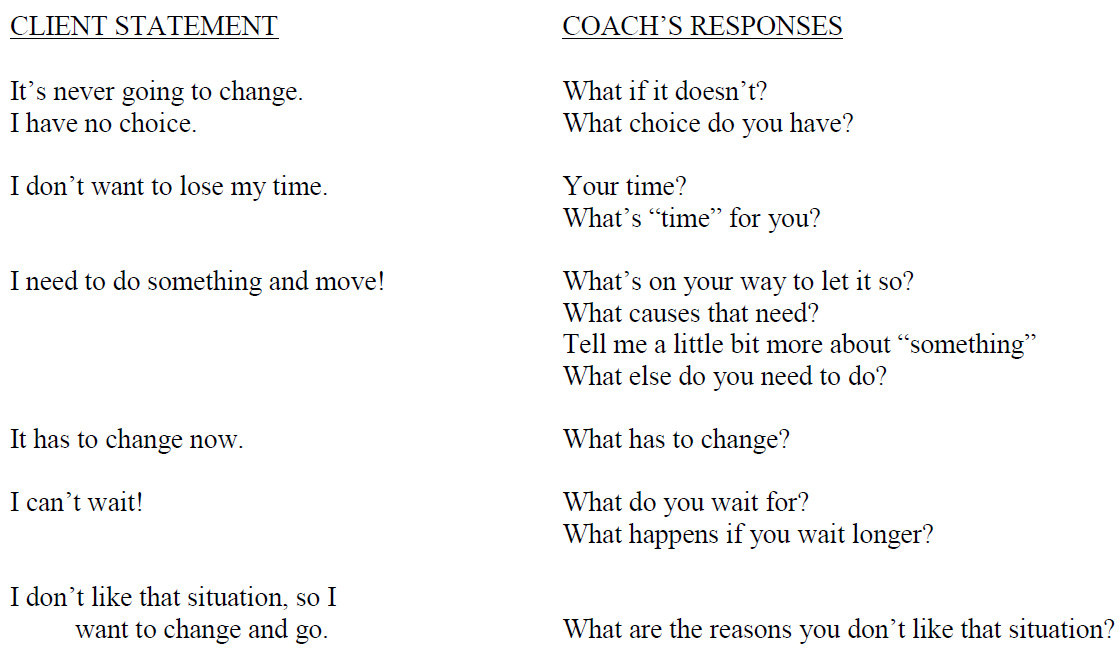
A Coaching Power Tool Created by Nancy Wattié
(Life Performance Coach, FRANCE)
Time is free, but it’s priceless. You can’t own it, but you can use it. You can’t keep it, but you can spend it. Once you’ve lost it you can never get it back. – Harvey Mackay
Before sharing my tool, I would like to tell that the notion of TIME came up a lot in my peers coaching as a client. Since the beginning of my enrollment with ICA, I had so many ideas to write a power tool. That flew away as fast as they merged up. Last June an idea suddenly came up and never disappeared. I did my journey with it….. I finally shifted myself from Impatience to Trust.
My own Learning
Naturally very enthusiastic, curious, and having had a NDE (Near Death Experience) many years ago, the notion of time and the impatient attitude are part of my daily life since then. BUT when I reason myself to show a little letting go of time, a patient ability erases that attitude. I realize that it really becomes easier to trust what is. In our case; the coaching process.
The tool gives me some form of calm, the inner wind calms down and I finally reach an acceptance almost naturally to trust the process. The first time it happened to me was like a « ah-ha moment ». Then I tried to set it up again and the tool quickly became a « Power Tool ». I then worked to better understand how it works and also to use it with my clients. It is now part of the tools in my “Coaching Tools box “.
Imagine a customer who has just signed your contract. He is ready to start the support you sold him. At the first session, he shows you the change he wants, and is eager to reach his goal! And here you make him understand that reaching the destination quickly is less important than anything he’s getting to learn on the way to get there. Even if the path is long …
Description
Impatience
1. Impatience – Basic Ideas & definition
2. Impatience in practice
3. How to measure impatience?
4. Opening up to Trust
Trust
1. Trust – Basic Ideas & definition
2. Trust in practice
3. How to measure Trust?
4. How to anchor to Trust?
Symbolic and Holistic Perceptions
1. Impatience and Trust experienced in the body
2. The Metaphors
3. What does Traditional Chinese Medicine – TCM – say?
Personal Reflections
1. What makes our clients feel empowered?
2. How do we help our clients make the shift?
3. Final considerations for the coach
Impatience vs. Trust
Description
The perspectives I choose for my Power Tool are the description on a basic plan, then shifting to the practice by a few technically aspects. Finally the Symbolic and Holistic aspects are also important for my own style of coaching. These supplement aspects are also a part of my learning. So I choose to include them also as another kind of perspectives resources.
I chose to work on the shift “Impatience ⇒ Trust” because that’s how I lived it. At the beginning of my work, by sharing my “Impatience vs Trust” tool, it became clear that the opposite direction could also happen. When a person has a sufficiently conscious trust, impatience can become the consequence and even a driving force to continue to action. I will not talk about this aspect. My first desire is to change the state of impatience towards trust during a process of action (s) to be undertaken.
Impatience
1. Basic Ideas & definition
Impatience is defined and described by several dictionaries in two different meanings. The first clearly reveals the notion of time. Impatience is the state of not wanting to wait for something or someone. The impatience emerges from a talk about a delay on our well-timed line of time. Impatience can lead to irritable intolerance about anything that mentions the challenge over time.
The second meaning expresses a notion of greed, desire and / or enthusiasm. Impatience is then defined as a desire eager and eager for change. It sometimes reflects a notion of competition. Personally, I’d like to conclude with a description such as: “On the moment, the impatient attitude serves to satiate the desire to go faster towards change. This state is lived as pleasant”.
Conversely, patience is defined in some dictionaries as the ability to react without irritation, without complaint. Patience refers to calm and temperance, and especially to the ignorance of a possible boredom in the face of a delay. Patience is in touch with our inner being, it dialogues with our intimacy. Patience then testifies stability, a kind of persistent courage, self-control and a self-possessed. Where can this patience come from impatience? Of course, trust!
2. Impatience in practice
Impatience would be a behavior and patience an aptitude. So we are working on transforming a behavior. Impatience can lead to anger, and consequently to a drop in energy. Patience can lead to more positive states such as calm, hope, or wisdom.
My own reflection here makes me think to questions as:
- Would impatience be a sign of immaturity (which forces us to wait)?
- Is impatience a lack of self-confidence?
- Does impatience point to an underlying fear of distance to action?
These different notions and perspectives are my sources of clues for technically moving to coaching issues. The notions of time, of delay, of precipitation for change are the aspects that I take from it to work. The risks, the beliefs and the fears are also aspects that I retain, and for ease of approach in a first stage of evolution, I classify these last aspects in the heading “fears” to advance the work and the customer towards trust.
3. How to measure Impatience?
Is the intensity of impatience related to the control that one has at this precise moment? Could this control intensify impatience? According to research findings, there are several criteria that influence the intensity of impatience. They can be read on: Measures of Impatience Summary Statistics
Here are some suggestions for criteria that serve as starting points for your exploration:
I did not really find any schema, studies, diagrams or anything else on the web. This inaccuracy with regard to the means of measuring impatience is probably due to the number of very varied criteria for measuring it.
4. Opening up to Trust
At this stage, I believe that only the power of the reflection of what the two different states are, can allow shifting from one to the other. It’s a change of mindset. Patience is the result of introspective work which leads to a stronger deployment to believe and act.
The Ego is IMPATIENT because time is limited. The spirit is PATIENT because it knows, it is eternal. The Minds Journal Editorial
Trust
1. Basic Ideas & definition
It has been described in many of our modules. I like to define it as accepting not to be in control of the situation. That’s leads to the idea that accepting something would come from trusting one another, and also from one’s own self-confidence in letting go of the situation. Conversely, a lack of self-confidence can be manifested by impatience.
2. Trust in practice
Confidence is a feeling like the lack of trust. Confidence very often leads to inner calm. It brings a kind of positive energy that provides some power, and therefore a new personal value.
Conversely, a lack of confidence in oneself and towards others is manifested by doubts and paradoxically can lead to behavior of impatience.
3. How to measure Trust? and …. how to know I reached it?
Since trust is defined as accepting not to be in control of the situation, the first element of measurement to be taken into account could be “the level of acceptance of the individual”. As for the measure of impatience, several factors can be taken into account to measure trust. There are many criteria to take place in order to try the measurement. My observation on the web did me completely lost because of these huge numbers of criteria. I picked a few results but finally, I decided to trust my client first.
Again, these results reflect perceptions, not feelings.
If we measure the trust to others, we need to evaluate firstly the self-confidence which is the basic root of the interpersonal trust.
The general acceptance of the client, his learning, experiences, personality traits, general expectations, is all criteria that make the scale of trust.
Then appears the notion of love. The intensity of the love we have for ourselves and for others. Many criteria can be or should be taken into consideration when measuring trust, depending on the client’s case. And it could take time. Is that what’s the client wants?
I don’t think so.
As a guide, I risk some measurement criteria to get a sense of trust. Outward listening to my client, as well as personal feelings, I am getting to let go the theory here and trust myself to the coaching process. Could my client evaluate his own trust? Yes! I’ll guide him through an agreed scale in order to measure where he is and where he will feel better.
If the client needs to go deeper in this “Trust” definition, then we could explore criteria which can help him to define his new “Trust” destination after shifting from impatience.
If necessary, here are some of the criteria that could help to measure Trust:

To measure the feeling of trust with a client who would need to visually raise awareness through a pattern, using a wheel would be best I think.
I would accompany the client to decide for him the criteria that would seem important to him to the extent of his self-confidence and trust. All these are variable in time, in the lived, and in the present need. Using a wheel time to time with the chosen criteria would help measure progress by comparison.
To become conscious of one’s own confidence by a means of measurement is a process that is very close to the action of measuring one’s comfort zones. So we could also draw on the following criteria:

4. How to anchor to Trust?
The powerful questions are our sources of reflection towards this change. Generally nothing but the awareness of one’s impatient state is likely to evolve into a new state of trust.
If the client clearly mentions the word “impatience” here are some additional questions:
Symbolic and Holistic Perceptions
1. Impatience and Trust experienced in the body
For Body language, impatience is often manifested by nervous movements, a faster rhythm of voice, confused language, and finder tapping, and so on.
Trust is often expressed by a medium tone of voice, a calm intensity, words spoken, a stream of controlled words. The attitude is often calm; the body stands upright and the gaze usually deep.
These are extra listening ways to explore with our client. BUT please keep in mind that perceptions are less important than feelings. So mirroring what you see…and wait….
The body tells. What the words cannot express, our body does it! According to Darwin, shoulder muscles are those of patience.
⇒Observe and reflect the body language of your client. ⇒Ask the customer:
Rameau composed a cantata in 3 tunes that reflect the general idea of the change between impatience and trust. They are entitled as such:
1. The expectation of impatience 2. The reasoned meditation 3. The rediscovered joy.
This brings me to the following questions:
2. Metaphors
Metaphors take an important place in listening. They prove to be a very easy tool to the awareness of a given situation. They prove to be a complementary tool to coaching, just like visualization.
Very often in metaphor, impatience is drawn and represented by a clock. The image of the elephant quite often symbolizes patience.
Get the client to use the metaphors of impatience, time, and trust. Ask him how he would describe his present moment with his state of impatience and the action to be taken. Or, its present state with its relationship with the other in relation to the situation worked. Then play with the result. Ask him to merge his own metaphors, to draw them, to tell them, to imagine them in movement, in color, smaller or larger.
And then, what changes at home, what the whole game with the metaphors brought him.
What brought you the result of this game of metaphors?
3. What does Traditional Chinese Medicine – TCM – say?
For Traditional Chinese medicine (TCM), patience and impatience are related to the level of the solar plexus. Also linked to the course of the meridian “Pericardium”, which goes from the chest on the right side of the body to the tip of the major finger. The ending point of this meridian, at the end of the 3rd finger; the MC9 is translated from Chinese by some words creating a metaphor; “Extinguish the Inner Wind” or “Bring the inner calm”. Fascinating, isn’t it? This meridian and the plexus refer to love.
To close, the points of the Solar Plexus and Heart Chakra (Patience & Trust) are on the line of the Conception Vessel. It’s up to us to play with the metaphors, the symbolism to help the client to bring out a reality that would give him a better emotional balance, and a more optimal way to manage the energy that flows between body and mind.
This info is just in addition to my research. The work of this tool is not part of coaching. If the client wants to talk about it, it would be a parenthesis to coaching.

Personal Reflections
This tool suggested a behavioral change. The tool challenges a behavior often understood as negative and undesirable, with an emotion, feeling, close to a personal value.
The impatient person believes to go faster when it is exactly the opposite. By clearing doubts, it is trust in its entirety, which generates a sense of security. This will help to address the action to be undertaken with greater confidence. By looking for measurement criteria, the attitude of trust is also an act of love.
The tool highlights “undesirable behavior VS sentiment / personal value”. The tool serves the evolution of a behavior often inappropriate towards the awareness of a personal value bringing more serenity.
1. What makes our clients feel empowered?
Simply bringing a customer from point A (impatience behavior) to awareness of a feeling or emotion (point B “Trust”), is one of the aspects of extraordinary coaching. Client will close the session calm and more confident if he realizes himself the result of the tool.
2. How do we help our clients make the shift?
At first, helping the customer can be done by mastering the tool on oneself. Then, here are some extra powerful questions of lived situations that have been useful to the understanding of this tool.

3. Final considerations for the coach
Although the chapter “Trust” occupies a preponderant place in our lives, the tool is quite easy to use. Overall, Impatience vs Trust can be used to shift a client’s perspective from a negative behavior to a positive emotion. It is facilitated by the simple fact of becoming aware of the two states brought to light. The tool also increases self-confidence leading to action.
Nancy Wattié Life & Performance
A few references:
Measuring Trust: Experiments and Surveys in Contrast and Combination – Institute for the Study of Labor
Trusting and trustworthiness: What are they, how to measure them, and what affects them – in Journal of Economic Psychology 31(1):64-79 · February 2010
MEASURING TRUST
Fetzer Institute – GENERAL TRUST SCALE